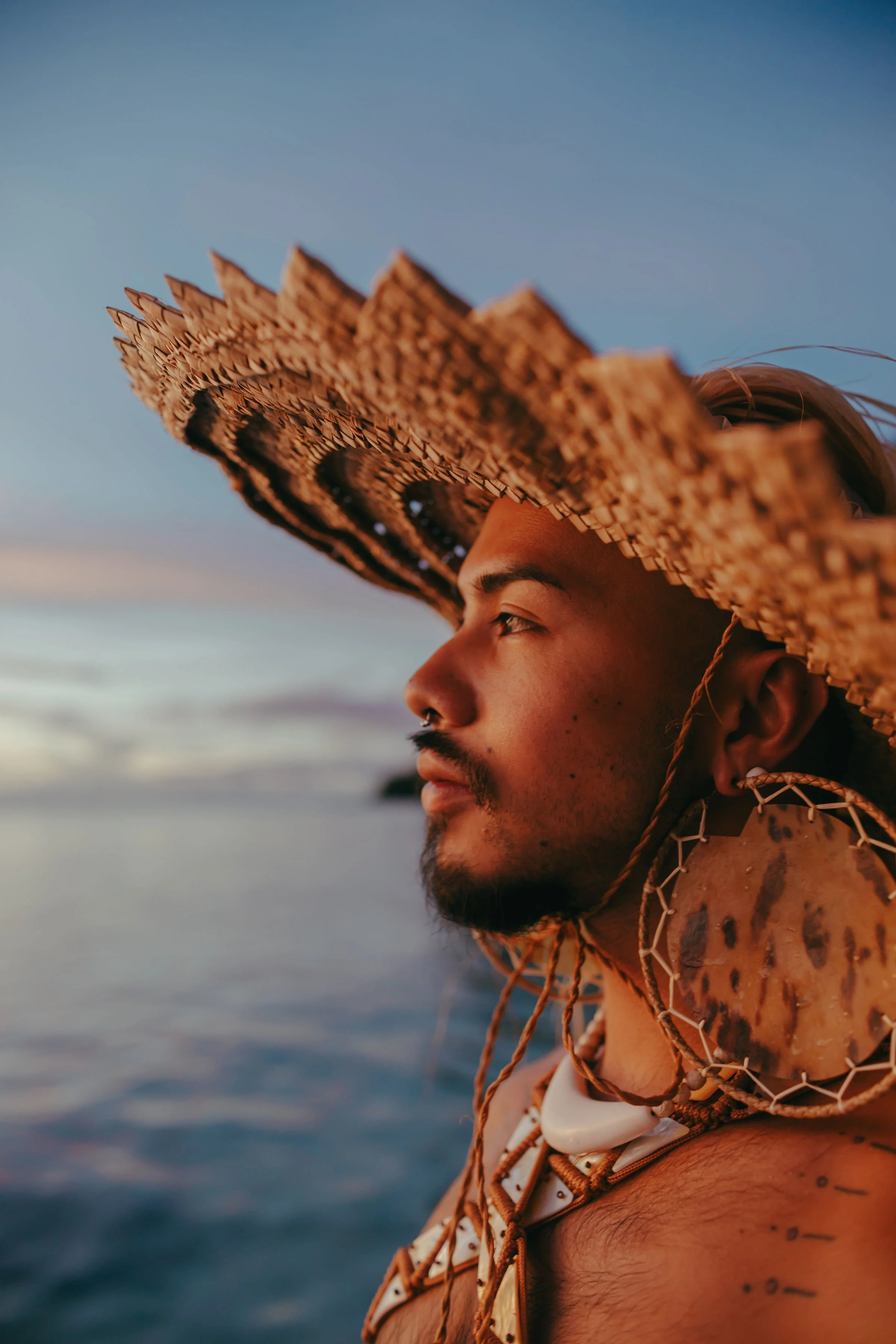Roquin-Jon Siongco
Rockin Roquin
Roquin-Jon Quichocho Siongco was born and raised on the island of Guåhan, and relocated with their family to Washington state (Coast Salish lands) as a teenager. It was during their childhood years that they were first introduced to weaving, initially through classes in elementary school.
Focusing primarily on pieces crafted with pandanus (screw pine) leaves, coconut fronds, and hibiscus bark, this CHamoru artist is able to transform simple organic materials into delicately ornate creations that both recreate and redefine their culture's weaving traditions.
Over the years, Roquin had many teachers that have passed on different techniques and bits of weaving knowledge, including practitioners from their native CHamoru culture and Indigenous weavers from other nations. In turn, this also allowed them to hold space for community with those sharing a similar cultural background and individuals from other Indigenous cultures.
Today, Roquin has been weaving steadily for about 20 years. However, their practice is not limited to hats, baskets, mats, and other conventional woven items one might expect to see. They wanted to expand beyond "recreating artifacts" and breathe new life into these techniques and artforms. They see weaving as “a conversation between a people and their environment. Taking on the form of soft sculpture and very "innovative in nature," lending a specific flexibility to their approach to a new way of weaving.
Roquin's pieces take the medium to a new level, with dynamic curves and sculptural pieces that make one wonder just how they could do that with something as simple as leaves. Beyond their contemporary visual art and larger installations, one of Roquin's primary focuses centers Pasifika fashion that merges couture designs with hand-woven garments and accessories. With their keen understanding of the complex mechanics and mathematics of weaving, Roquin has been able to create jaw-dropping all-woven gowns, harnesses, masks, and more.
Their designs emphasize their ability to innovate and reinvent the craft of weaving into runway-worthy, wearable sculptures. They didn't want to use woven pieces as a "fabric" afterthought or "visual texture," like some have previously attempted. Instead, the fibers take center stage and underline the malleability of the medium, and Roquin's own ability to bring this intergenerational practice into a contemporary conversation.
As Roquin describes it, their work can often be seen as "futuristic, but still pays homage to the past while being present in the now."
With experiences and connections across oceans, they have been able to weave together numerous individuals and communities, and see these relationships reflected in the finished pieces.
For Roquin, it is imperative that their work honors cultural customs that have survived throughout generations, and persevered in the face of colonial erasure. Without acknowledging these international practices and learning where they come from, their work would not hold the solid foundation it maintains as contemporary CHamoru & Pasifika art. Because of this, their work is able to take on new shapes and experimental forms, innovative combinations of materials, and the building of cross-cultural relationships that may not have happened otherwise.
In their eyes, CHamoru fashion and weaving craft has never been static: "We've always been expanding on things... so don't be afraid to start new traditions. Traditions have to start somewhere."
Rockin Roquin links below:



